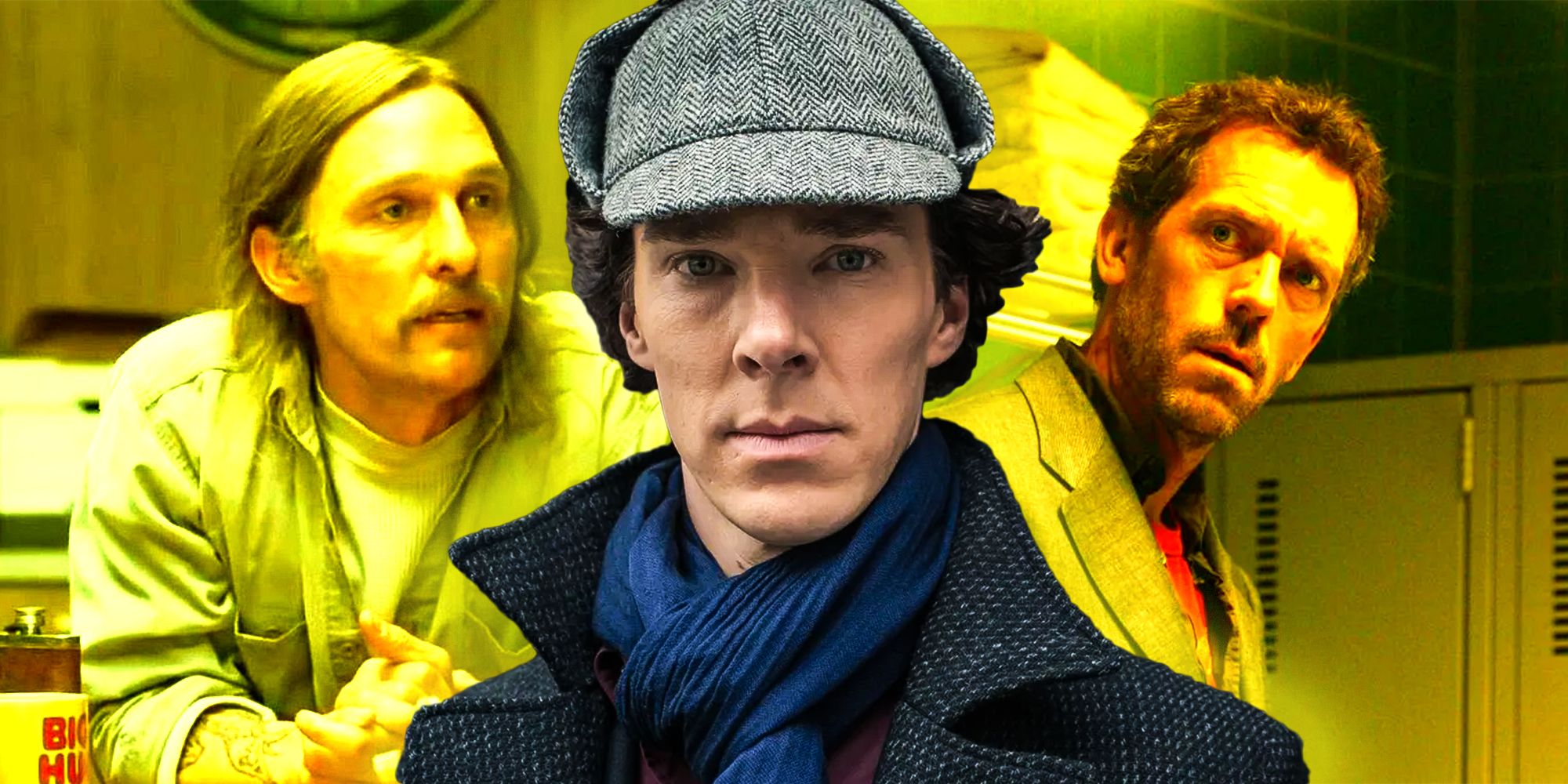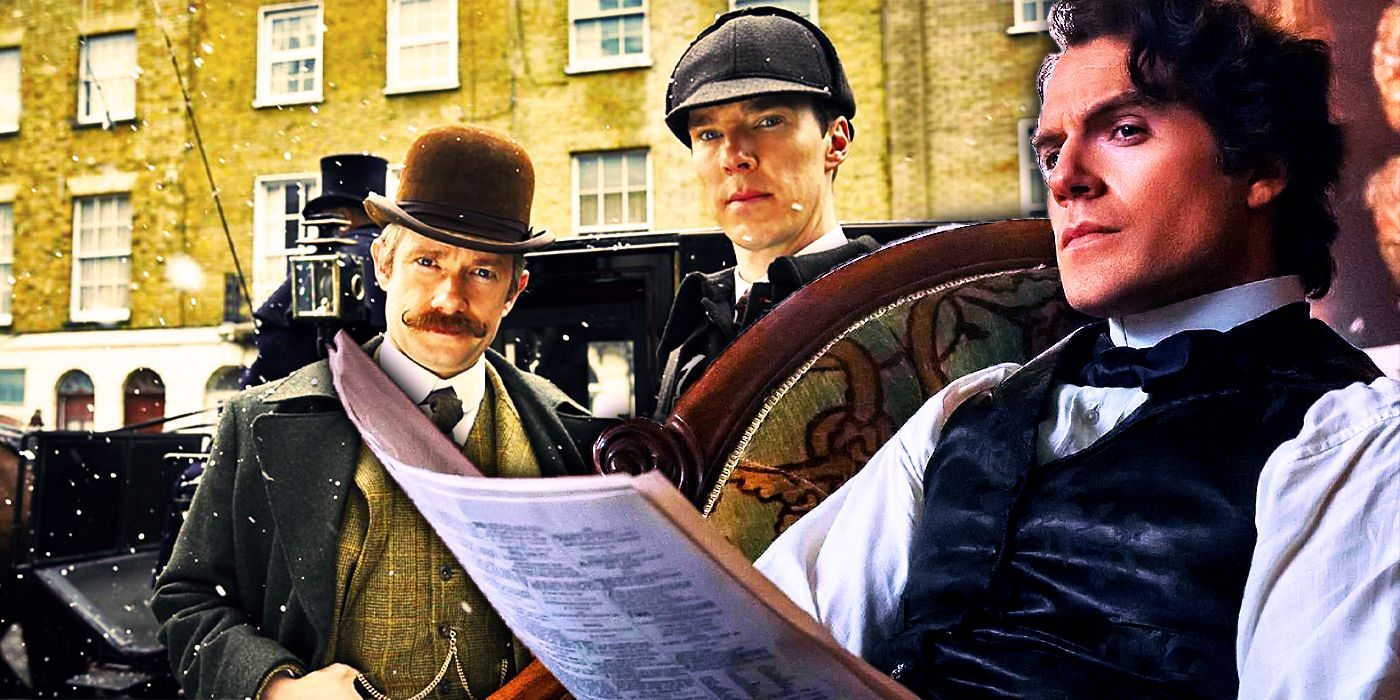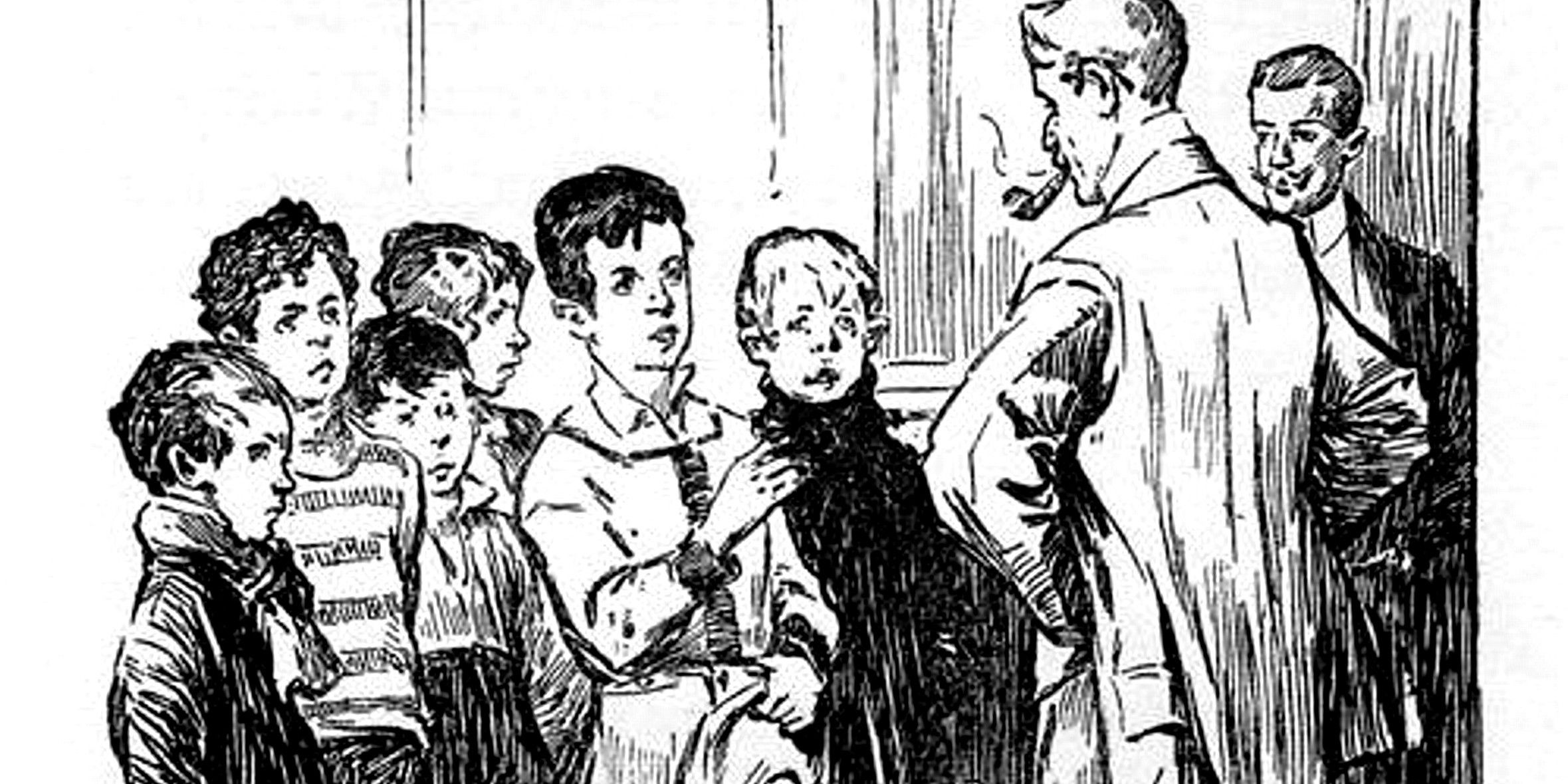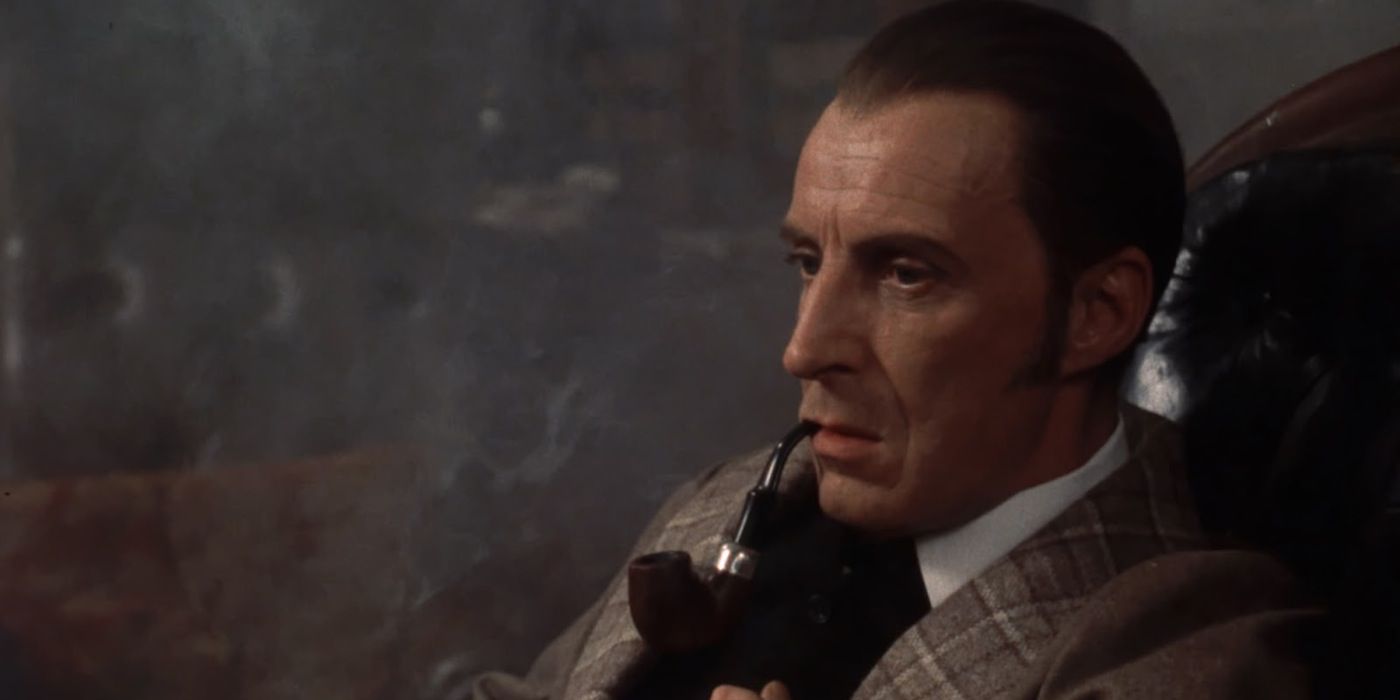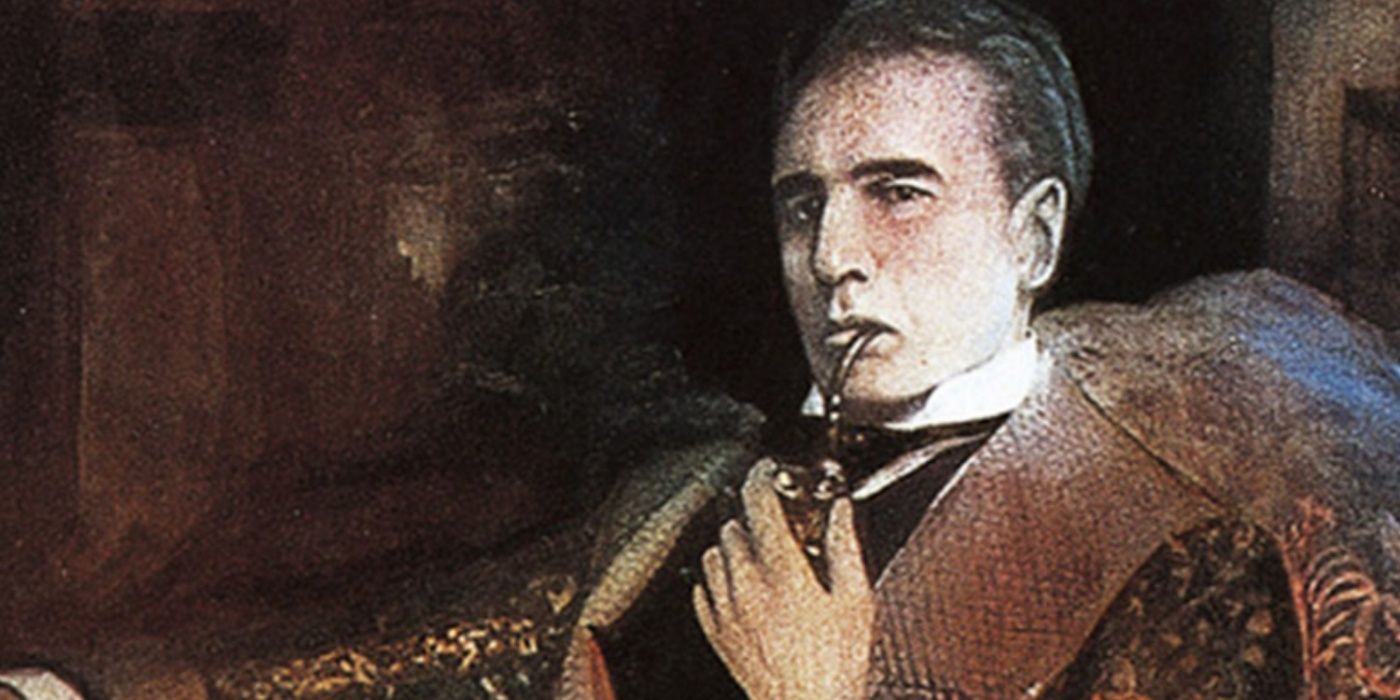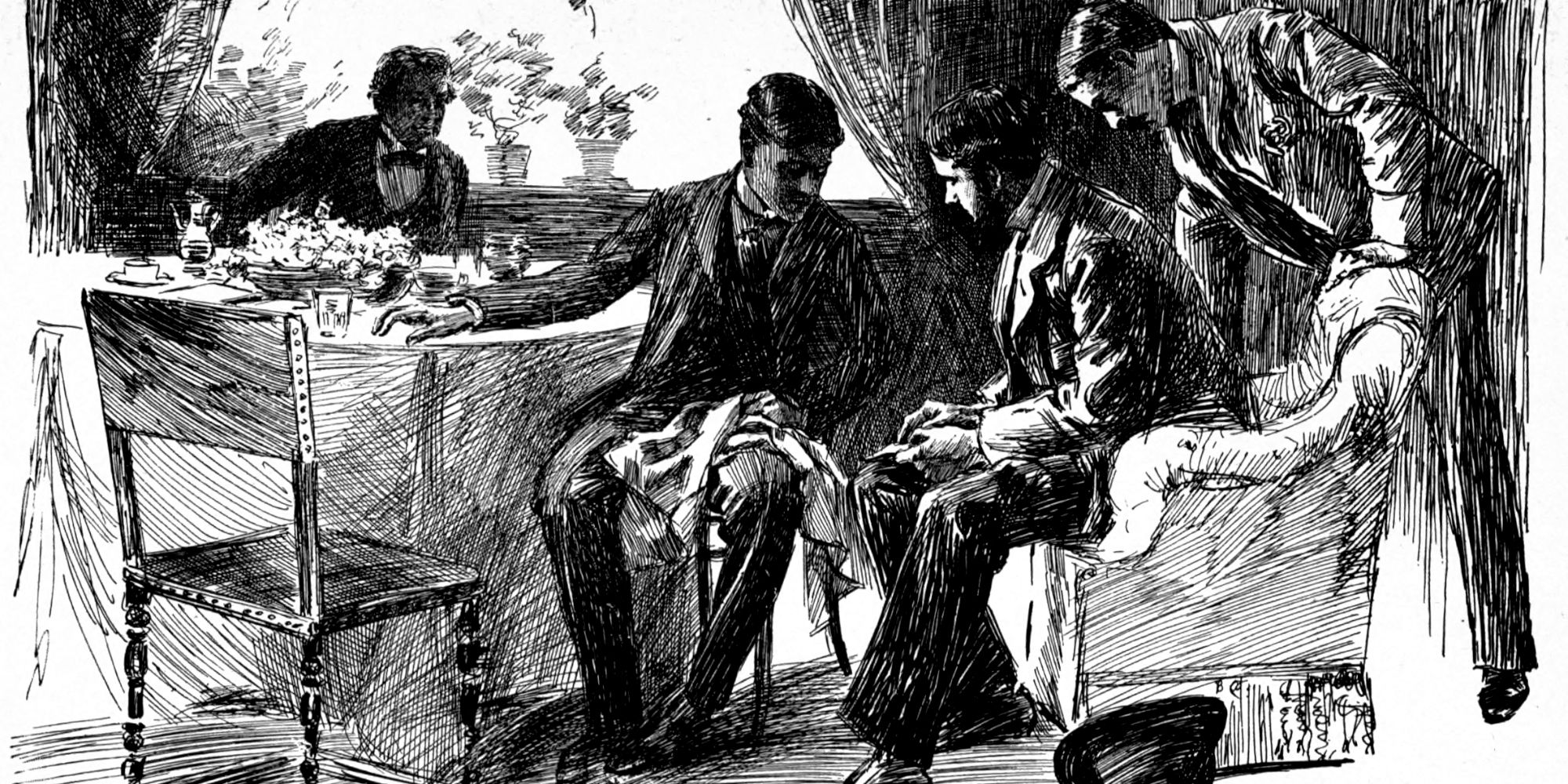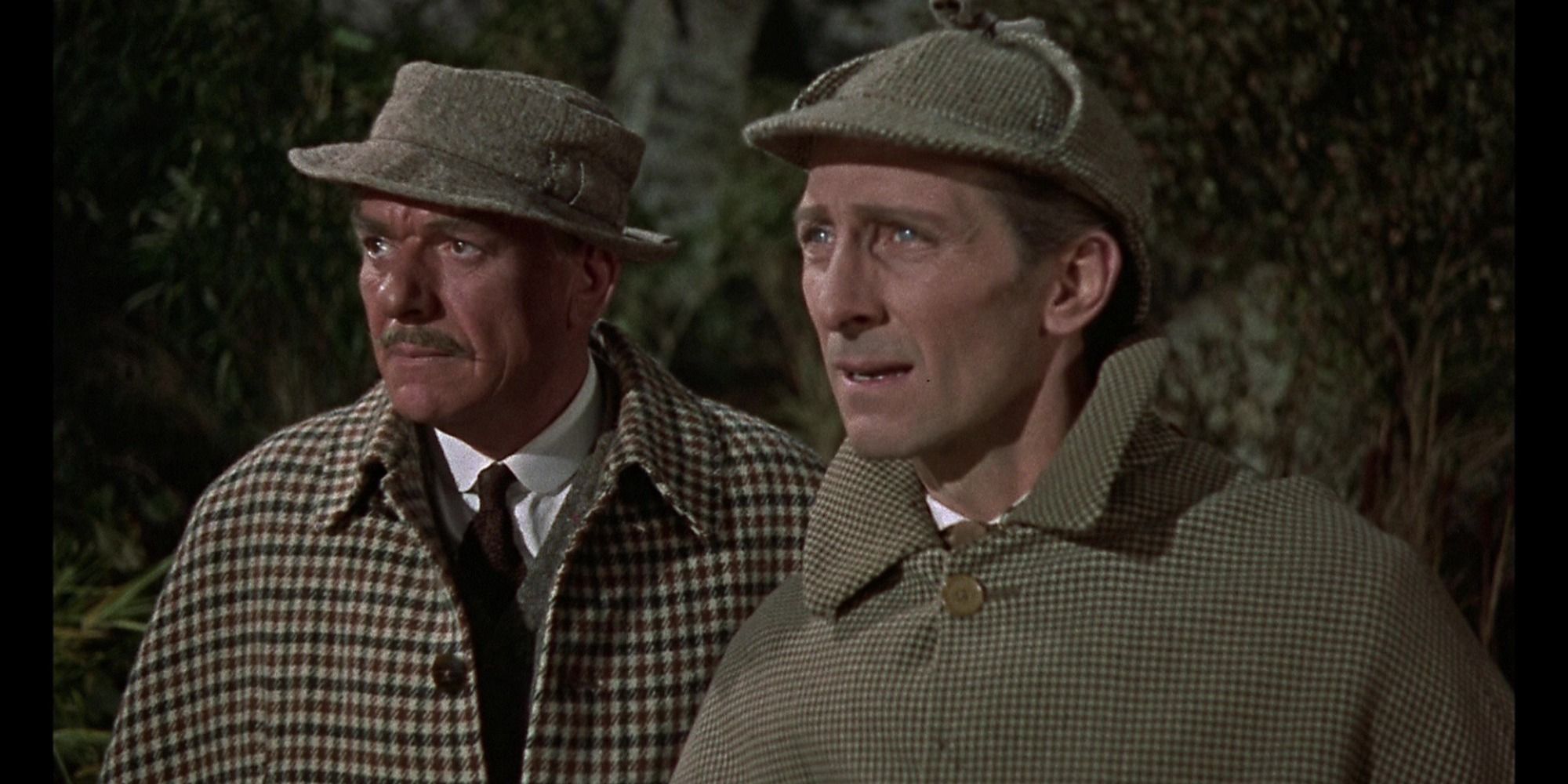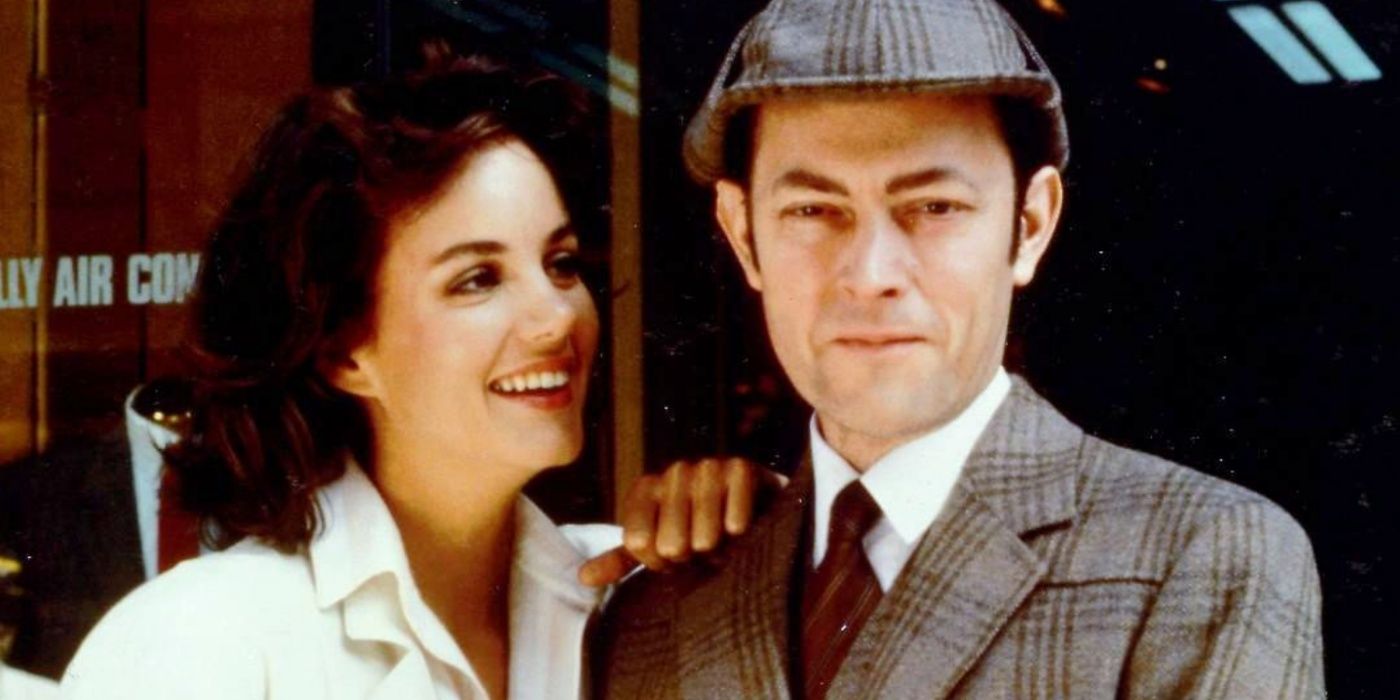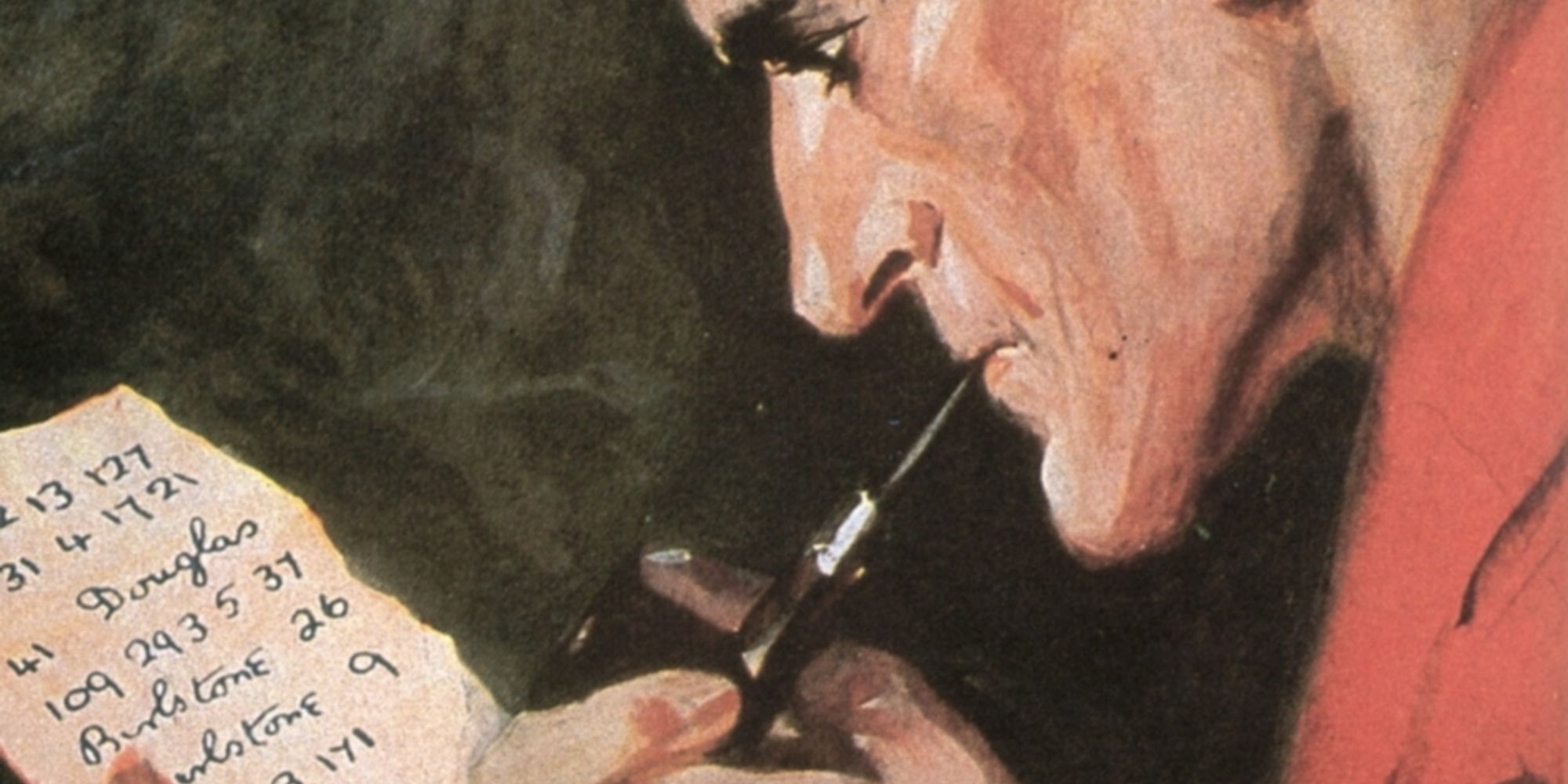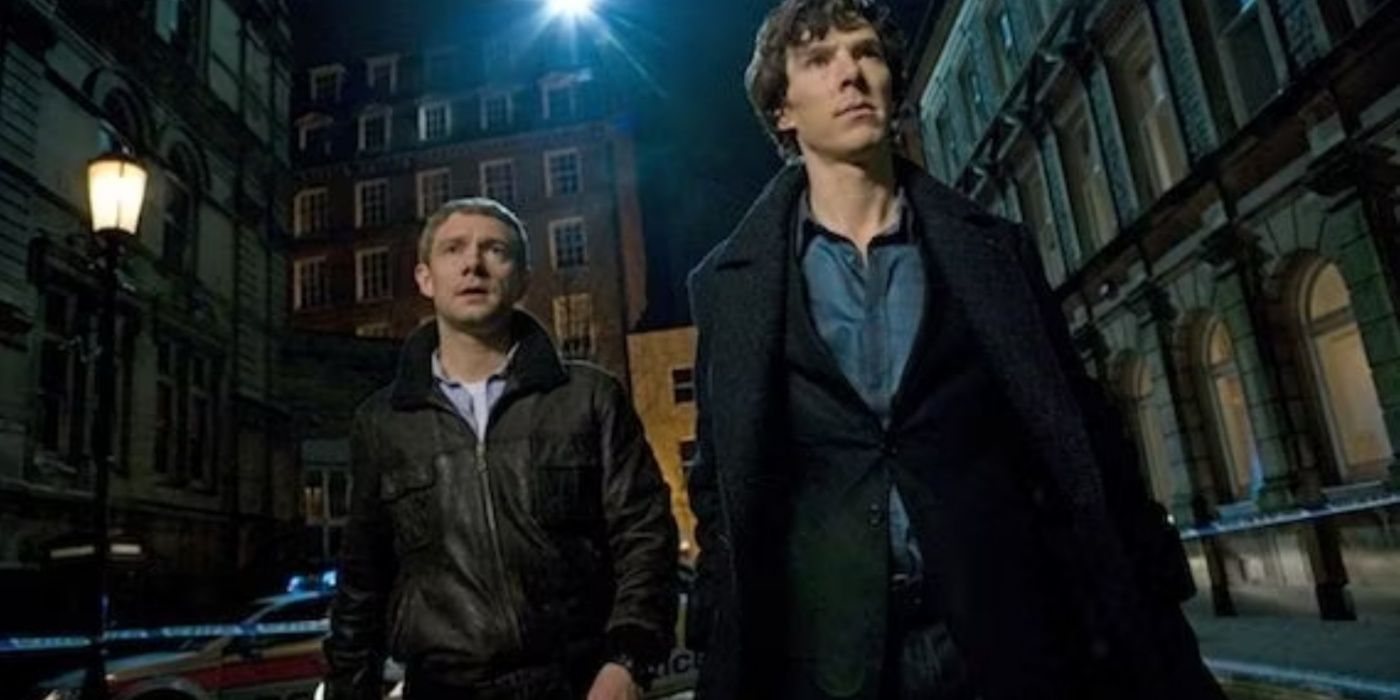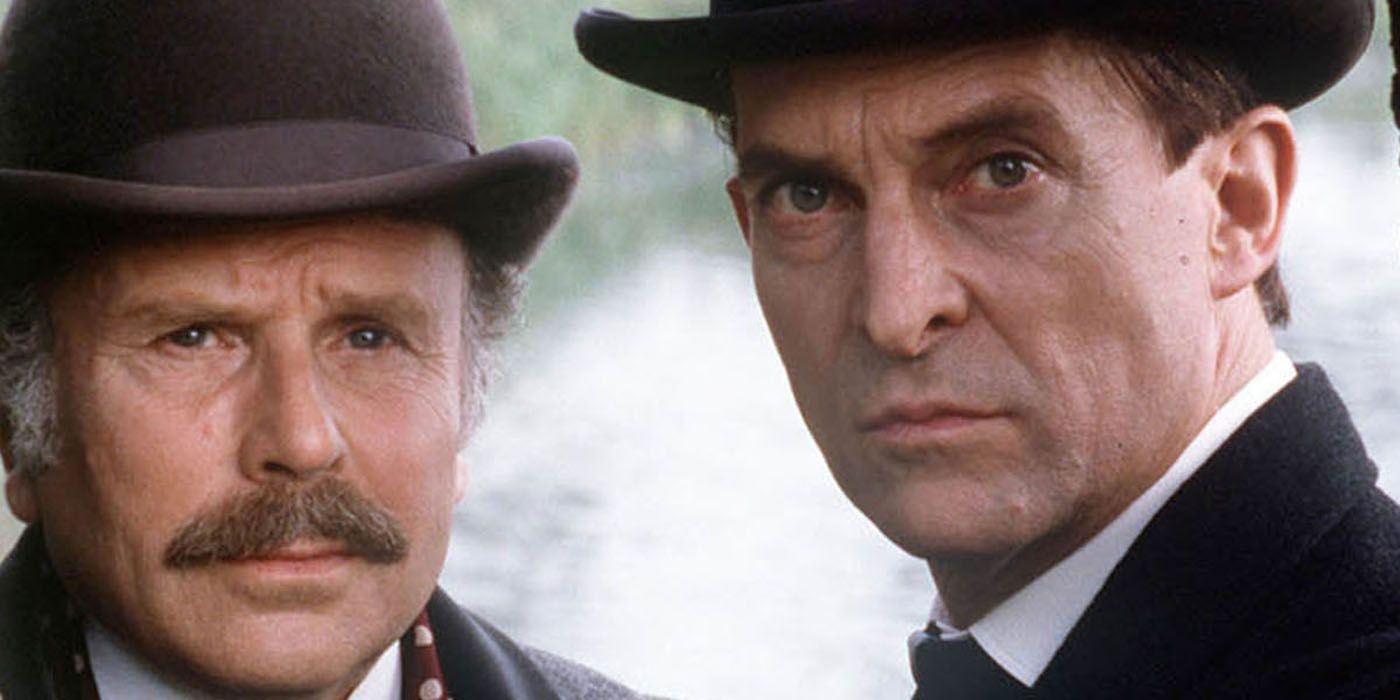Summary
- Order matters when reading Sherlock Holmes books, whether by publication date, chronological order, or a mix of both.
- The series includes novels and short stories that may not always align chronologically, complicating the reading order.
- Enjoy the original Sherlock Holmes stories before delving into modern adaptations to fully appreciate the iconic detective's mysteries.
Sir Arthur Conan Doyle’s Sherlock Holmes stories have endured since their initial publication, but like the master detective’s mysteries, there is more to reading Sherlock Holmes books in order than meets the eye. Originating in 1887’s A Study In Scarlet, Sherlock Holmes and his partner Dr. John Watson have been solving mysteries together, both on the page and screen, for over 100 years. However, audiences who are likely familiar with the detective and his assistant’s most iconic adventures through the plethora of adaptations over the years, might not know the best way to enjoy the Sherlock Holmes books in order.
Initially, it may seem like picking an order in which to enjoy the Sherlock Holmes stories wouldn't be such an undertaking. However, since they weren’t published in chronological order, publication order is not the only logical way to read the Sir Arthur Conan Doyle classics. There are many ways to read the Sherlock Holmes books; in the order of release, in chronological order, and the best way to read Sherlock Holmes books in order, which combines the two.
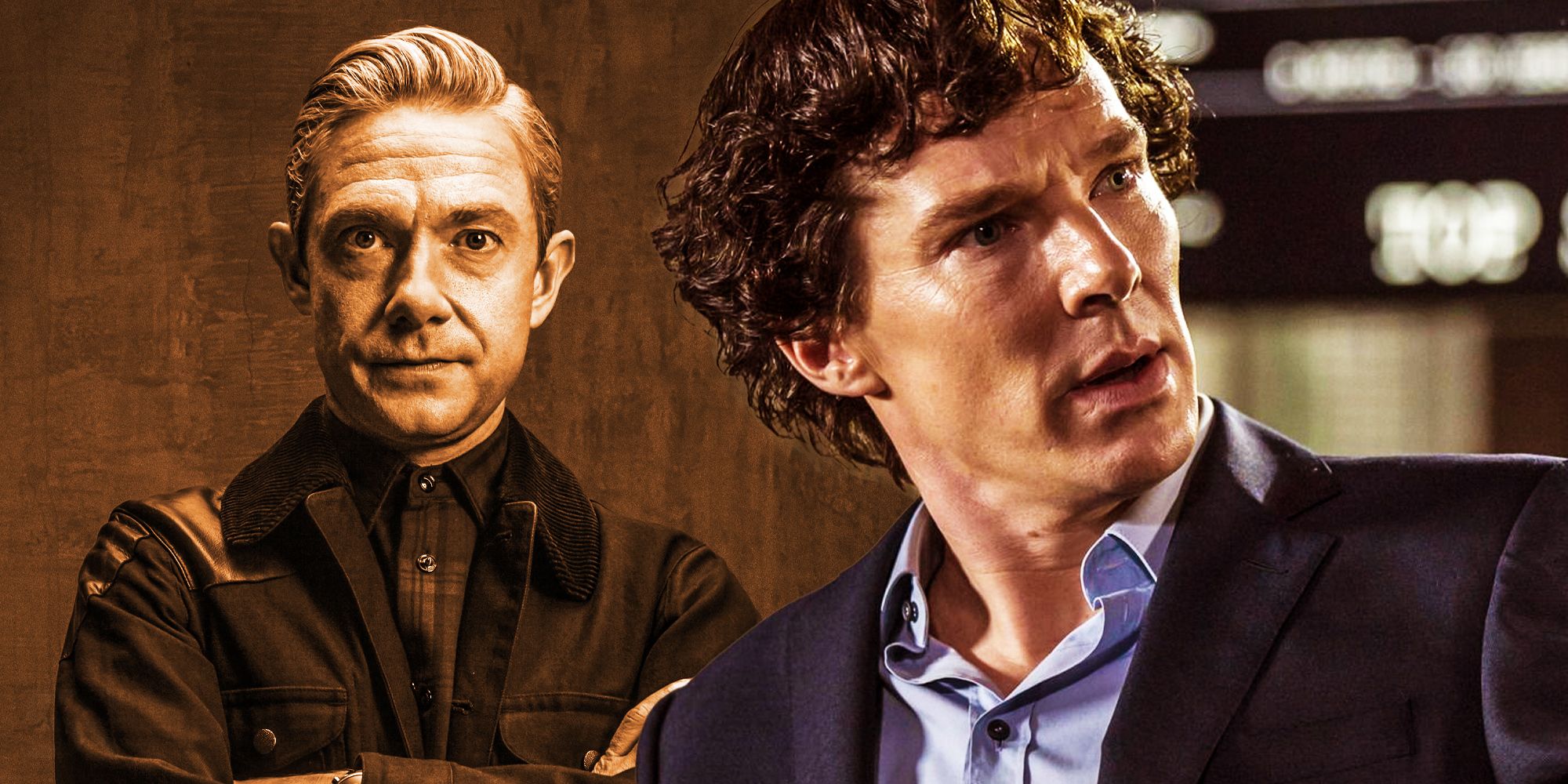
Sherlock Season 5: Will It Happen? Everything We Know
The modern adaptation Sherlock went off the air after a controversial fourth season in 2017, and fans have been clamoring for a season 5 ever since.
Sherlock Holmes Books In Release Order
One of the most obvious ways to read the Sherlock Holmes books is in publishing order. Beginning with 1887’s A Study In Scarlet and concluding with The Casebook Of Sherlock Holmes in 1927, reading Doyle’s stories in publishing order is a great way to enjoy the stories surrounding the famous detective the way that Doyle’s original audience would have. While that doesn't place the books in chronological story order, that is largely because Doyle was asked to write more Sherlock stories after publishing what he believed was his last.
A Study In Scarlet (1887)
Released in 1887, A Study in Scarlet was the first-ever appearance of Sherlock Holmes and Dr. Watson. The title of the book was based on a speech given by Holmes about how his murder investigations are "a study in scarlet" where he has to expose every inch of it. When a corpse is found at a derelict house in England, there is not a mark of violence on it, but there is one word written on the wall in blood. That is when Holmes takes the case and untangles a trail of murder bigger than the police imagined.
A Study in Scarlet was one of the first movie adaptations, arriving in 1914 as a British silent movie. Later in 1933, another movie arrived with the name of the book, but its plot has nothing to do with the Doyle story. On television, it appeared in the 1954-1955 television series, but only with the opening setting up a different story. It was more loyally adapted in the 1968 BBC series with Peter Cushing playing Holmes.
The first episode of Sherlock in 2010 adapted the story but renamed it A Study in Pink. There was also an episode of Elementary that adapted it, titling it A Study in Charlotte.
The Sign Of Four (1890)
Sir Arthur Conan Doyle's second of his Sherlock Holmes books in order is The Sign of Four. This starts when a young woman asks Holmes and Watson to help her find her missing father. This leads Holmes and Watson on a treasure hunt with a mysterious map and little in the way of clues.
This book remains an interesting one as Watson openly questions Holmes about his drug use. The book also features the Baker Street Irregulars who help Holmes investigate parts of the case. This is also the book where Watson falls in love with Mary Morstan and asks her to marry him.
The Sign of Four has several adaptations over the years, including three different silent films from 1905 to 1923. It was also part of the 1968 TV series with Peter Cushing and Nigel Stock as Holmes and Watson. In 1983, a TV movie arrived with Ian Richardson and David Healy in the starring roles. In 2014, the Benedict Cumberbatch and Martin Freeman series also adapted it with the changed name of The Sign of Three in the show's third season.
The Adventures Of Sherlock Holmes (1892)
The next of the Sherlock Holmes books in order was called The Adventures Of Sherlock Holmes and included 12 short stories about the famed detective. This collection of stories focuses mostly on one very important topic. Holmes spent most of his time in these mysteries attempting to correct social injustices and saw him seeking a way to find a fair sense of justice when many law enforcement officials looked for the quickest decisions.
This is also the book that features the only appearance of Irene Adler (in A Scandal in Bohemia). While it was her only appearance, she is one of the most popular characters in the movies and TV shows.
Sherlock Holmes has had several movies and TV shows based on his works, and that includes his short story collections such as this one. There were even TV shows that used this book's title as its name. Additionally, Irene has appeared as the love interest in both Elementary and in BBC's Sherlock. Rachel McAdams also played her in the Robert Downey Jr. Sherlock Holmes movies. The stories from this book appeared in the 1921 film series and the 1984 TV series.
The Memoirs Of Sherlock Holmes (1893)
The Memoirs of Sherlock Holmes is another collection of short stories, and the second in the Sherlock Holmes books in order of its type. This time around, there were 12 stories included in the book. All the stories were originally published in The Strand Magazine and then collected into this book. This was also supposed to be the end of Holmes, and Sir Arthur Conan Doyle said he was killing the character off in "The Final Problem," the last story in the book's collection. However, Doyle eventually came around to the fans' demands and brought Holmes back.
Almost every story in The Memoirs of Sherlock Holmes has been adapted into a TV show or movie over the years. All the stories were part of the 1921 film series. In the 1984 TV series, eight of the 12 stories ended up as episodes in the series. There was even an adaptation of "The Cardboard Box" in that series, but it was retitled The Memoirs of Sherlock Holmes.
The Hound Of The Baskervilles (1902)
Sir Arthur Conan Doyle killed off Sherlock Holmes in the story "The Final Problem" and the detective remained dead for nine years. However, in 1902, Doyle brought him back for a new story (set in the past) called The Hound of the Baskervilles.
The story involved the attempted murder that helped create the legend of the diabolical Hound of the Baskervilles. This was one of Holmes' more horror-centric tales, and while it kept all the detective's mystery tropes intact, it added in a great deal of gothic horror surrounding the mythical beast. The book was a huge success and helped bring Holmes back from the dead.
The story was adapted into several short films and was part of the 1921 film series. In 1939, a big-budget Hollywood movie arrived with Basil Rathbone playing Holmes in The Hound of the Baskervilles. In 1959, another movie arrived based on the story with Peter Cushing in the lead role as Holmes. The Benedict Cumberbatch series took on the story in the second season of BBC's Sherlock, and it was also the inspiration for two different episodes of Elementary (The Hound of the Cancer Cells and Hounded).
The Return Of Sherlock Holmes (1905)
The Sherlock Holmes books started up again in 1905 when Sir Arthur Conan Doyle resurrected his detective following Sherlock's death a decade before. "The Adventures of the Empty House" has Holmes explaining how he lived after his apparent death. Interestingly, the last story in the book said that Holmes was retiring and would not be back, although Doyle gave in again a few years later. There were 13 total short stories in this collection.
Many of the stories included in The Return of Sherlock Holmes were adapted in different forms. Several of the stories were included in the 1921 film series. All the stories here except for three appeared in the 1984 TV series as well. The Benedict Cumberbatch BBC Sherlock series also took the idea from the first story in the book in explaining how he faked his own death after the second season. Black Peter was used in an episode of Elementary called Dead Man's Tale. The Pearl of Death was adapted in both Sherlock and Elementary.
The Valley Of Fear (1915)
Ten years after Sherlock Holmes retired at the end of the previous short story collection in the Sherlock Holmes books, Doyle wrote the fourth and final full-length novel in his Sherlock Holmes series. This was The Valley of Fear and was based loosely on the real-life Pinkerton agent James McParland and the mysterious Molly Maguires. Holmes and Watson arrive at a mansion in the English countryside where a man was either killed or died by suicide, and they end up revealing a secret society that might be responsible.
There have been four movies based on the story, including a silent film in 1916, a movie in 1935 called The Triumph of Sherlock Holmes, a 1962 movie that used minor elements from the story called Sherlock Holmes and the Deadly Necklace, and a 1983 animated movie with Peter O'Toole voicing Holmes. It was also part of the 1954 TV series and was referenced in BBC's Sherlock in the fourth season's final episode, "The Final Problem."
His Last Bow (1917)
His Last Bow arrived two years after the last Sherlock Holmes novel and is a collection of previously published stories. These stories were mostly published in magazines between 1908 and 1917. There was also a fun statement in the book where Watson assured people that these were all old stories for Holmes and that the detective was still happily retired and in good health. The book even included a rarity for Holmes, as His Last Bow: The War Service of Sherlock Holmes was about his war service, not his work as a detective.
All the stories in this collection except for "The Last Bow" were included in the 1984 TV series. "The Adventures of the Cardboard Box" was included in Elementary as the retitled "Ears to You." "The Adventure of the Bruce-Partington Plans" was partially used in BBC's Sherlock's season 1 episode, "The Great Game." "The Adventure of the Dying Detective" was the inspiration for the season 1 Elementary episode "You Do It Yourself." "The Disappearance of Lady Frances Carfax" was the basis for the Elementary episode, "The Ballad of Lady Frances."
The Case Book Of Sherlock Holmes (1927)
The Case Book of Sherlock Holmes came 10 years after the last collection and three years before Sir Arthur Conan Doyle's death. There were 12 short stories in this final collection, all published between 1921 and 1927. These short stories have proven to be some of the most popular and introduced new characters to the Sherlock Holmes canon.
All but three of the stories in this collection of shorts were adapted for the 1984 television series. Elementary introduced two characters from "The Adventure of the Illustrious Client" in the third season of the series - Kitty Winter and Adelbert Gruner. Elementary's season 2 premiere was also inspired by "The Adventure of the Three Gables." The mystery from "The Problem of Thor Bridge" was used in episodes of Murder, She Wrote, CSI, and Elementary, proving that Sherlock Holmes has also inspired many other great fictional detectives.

New Sherlock Adaptation Is A Massive Slap In The Face For One Netflix Hit
Although Enola Holmes has performed well among both critics and audiences, the new CW Sherlock Holmes show seems to be a retread of the Netflix hit.
Sherlock Holmes Books In Chronological Story Order
Although reading the Sherlock Holmes stories in chronological order might make the most sense in theory, it's messy in practice. Because the series consists of both novels and short story collections, some short stories take place before certain novels while others from the same collection take place later. Attempting to read the books in chronological order might not perfectly line up with the actual Sherlock Holmes chronology. However, for those looking to experience the detective and his assistant’s adventures in the order they did, reading Doyle’s books in chronological order is the way to go.
|
Read Order |
|---|


